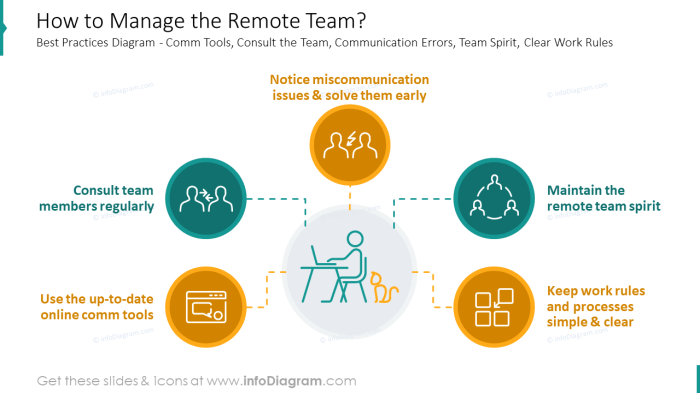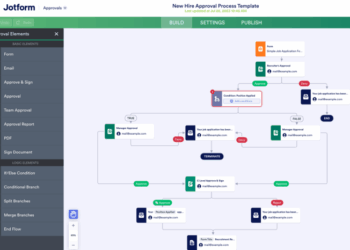Embark on a journey through the realm of Configuration Management Best Practices for Remote Teams, where insights and strategies intertwine to create a roadmap for success in the virtual workspace.
Delve deeper into the nuances of remote team configuration management as we explore the intricacies of this essential aspect of modern work dynamics.
Introduction to Configuration Management for Remote Teams
Configuration management for remote teams refers to the process of tracking and controlling changes to software, infrastructure, and documentation in a collaborative and distributed work environment. It involves managing the configurations of systems to ensure consistency, reliability, and security across all team members, even when they are geographically dispersed.Configuration management is crucial for remote teams because it helps in maintaining uniformity and consistency in the software development process.
With team members working from different locations and time zones, having a centralized system for managing configurations ensures that everyone is on the same page and working with the latest versions of code and documentation.Examples of how configuration management can benefit remote teams include:
- Ensuring that all team members have access to the most up-to-date version of software and documentation, reducing the risk of errors and discrepancies.
- Facilitating collaboration by providing a platform for sharing and reviewing changes, allowing team members to work on projects concurrently and seamlessly.
- Improving security by enforcing access controls and permissions, ensuring that only authorized individuals can make changes to configurations.
- Streamlining the deployment process by automating tasks such as building, testing, and deploying code, saving time and effort for remote team members.
Centralized Version Control
- Centralized version control systems like Git or SVN allow remote teams to collaborate on codebases efficiently, enabling them to track changes, resolve conflicts, and revert to previous versions when needed.
- By using a centralized version control system, remote teams can have a single source of truth for their codebase, ensuring that all team members are working with the same set of code and avoiding divergent versions.
Automated Deployment Processes
- Implementing automated deployment processes through tools like Jenkins or Ansible can help remote teams to deploy changes to production environments quickly and consistently, reducing the risk of human error and ensuring that deployments are done reliably.
- Automation also enables remote teams to roll back changes easily in case of issues, providing a safety net for deploying updates and patches without disrupting the workflow.
Tools and Technologies for Configuration Management

Configuration management tools are essential for remote teams to ensure consistency and efficiency in software development processes. Let's explore some popular tools used for configuration management in remote teams and compare different technologies available.
Popular Tools for Configuration Management
- Git: Git is a widely used distributed version control system that allows remote teams to collaborate on code development efficiently.
- Ansible: Ansible is an automation tool that simplifies the configuration management process by automating repetitive tasks.
- Puppet: Puppet is another popular configuration management tool that helps in automating the deployment and management of software and infrastructure.
- Chef: Chef is a powerful automation platform that enables remote teams to manage infrastructure as code and automate configuration tasks.
Comparison of Different Technologies
When it comes to remote configuration management, different technologies offer unique features and capabilities. For instance, Git is ideal for version control and collaboration, while Ansible and Puppet are more focused on automation and infrastructure management. Chef, on the other hand, provides a robust platform for managing infrastructure as code.
Pros and Cons of Using Automation Tools
- Pros:
- Increased efficiency by automating repetitive tasks.
- Consistent deployment and configuration across remote teams.
- Reduced human error and faster time to market.
- Cons:
- Steep learning curve for team members unfamiliar with automation tools.
- Potential challenges in troubleshooting and debugging automation scripts.
- Over-reliance on automation may lead to complacency in manual configuration management skills.
Best Practices for Implementing Configuration Management in Remote Teams
Setting up an effective configuration management process is crucial for ensuring smooth operations in remote teams. Here are some best practices to consider:
Steps for Setting Up an Effective Configuration Management Process
- Define clear guidelines: Establish detailed procedures and policies for configuration management to ensure consistency across the team.
- Choose the right tools: Select a configuration management tool that suits the team's needs and allows for easy collaboration and version control.
- Implement version control: Set up a version control system to track changes, updates, and revisions made to configurations.
- Regularly review and update: Conduct regular reviews of configurations to identify any discrepancies or issues that need to be addressed.
Ensuring Consistency and Version Control in Remote Team Settings
- Establish a central repository: Store all configuration files in a centralized location accessible to team members to avoid version conflicts.
- Document changes: Keep detailed records of all configuration changes, including who made the change, when it was made, and why.
- Automate processes: Use automation tools to streamline configuration management tasks and reduce the risk of human error.
Handling Configuration Drift in a Remote Working Environment
- Monitor configurations regularly: Implement monitoring tools to track configuration drift and identify deviations from the desired state.
- Establish rollback procedures: Have a plan in place to revert to previous configurations in case of drift or unauthorized changes.
- Train team members: Provide training on the importance of maintaining consistent configurations and how to address configuration drift effectively.
Security Considerations in Configuration Management for Remote Teams

When managing configurations for remote teams, it is crucial to prioritize security to protect sensitive data from potential threats. Implementing proper security measures can help prevent unauthorized access and ensure the integrity of your configuration management process.Discussing strategies for securing sensitive data during the configuration management process is essential to safeguarding your organization's information.
By understanding the potential security risks associated with remote configuration management, you can develop a comprehensive security plan to mitigate these risks effectively.
Identifying Potential Security Risks
- Unauthorized access to sensitive data
- Data breaches or leaks
- Misconfigurations leading to vulnerabilities
- Insider threats within remote teams
Securing Sensitive Data
- Implementing strong access control measures to restrict access to sensitive information only to authorized personnel.
- Utilizing encryption for data transmission and storage to protect data from interception or unauthorized viewing.
- Regularly updating security protocols and tools to stay ahead of evolving security threats.
Importance of Access Control and Encryption
-
Access control ensures that only authorized individuals can view, modify, or delete sensitive data, reducing the risk of unauthorized access.
-
Encryption adds an extra layer of security by encoding data to make it unreadable without the proper decryption key, protecting information from unauthorized disclosure.
-
Combining access control and encryption in remote team configurations enhances data security and minimizes the risk of data breaches or leaks.
Concluding Remarks
In conclusion, the discussion on Configuration Management Best Practices for Remote Teams illuminates the path towards streamlined workflows, enhanced security measures, and optimized collaboration in a remote setting.
FAQ Insights
What are the key benefits of configuration management for remote teams?
Configuration management ensures consistency, facilitates version control, and enhances overall efficiency in remote team operations.
How can remote teams effectively handle configuration drift?
Remote teams can combat configuration drift by implementing regular audits, maintaining detailed documentation, and utilizing automation tools for monitoring.
What security risks should remote teams be wary of in configuration management?
Remote teams must be cautious of data breaches, unauthorized access, and potential leaks of sensitive information during the configuration management process.













